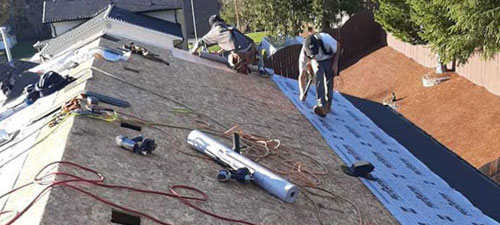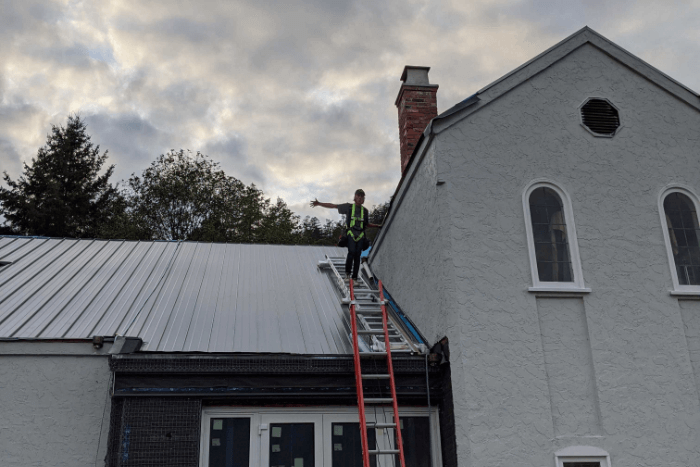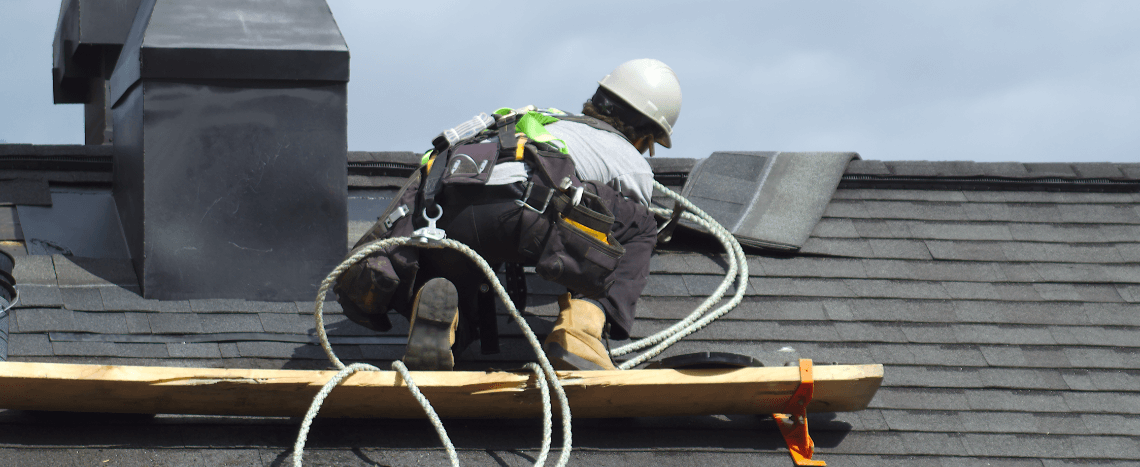How to take care of your roof like a pro
The four seasons and your roof
 Does your roof protect you from the elements? You need to take care of it too. It’s a two-way street. But thankfully, you don’t need to do much. Just follow these simple steps in your roof’s maintenance and you will be good to go.
Does your roof protect you from the elements? You need to take care of it too. It’s a two-way street. But thankfully, you don’t need to do much. Just follow these simple steps in your roof’s maintenance and you will be good to go.
If you live in a region with extreme temperatures and weather events, your roof needs a little extra care. This way, you can make sure it does its work, continues to add value to your property, and looks perfect for its entire lifespan.
Let’s look at some important things you need to do in order to keep your roof well-maintained like a pro.
How to Demoss Your Roof
Moss and algae may look nice on your roof, but they must be cleaned thoroughly. Moss can act like a sponge and absorb water. The water can then damage the roof shingles. Don’t worry though. It’s a pretty simple process and you can do it yourself.
Just make a mixture of 50:50 liquid chlorine bleach and water. Apply the solution on the affected area of your roof using a spray bottle, and let it dwell onto the surface for around 20 minutes time. Then, you can rinse it with low-pressure water.
Is it Important to Clean My Gutters?
Gutters play a crucial role in your home’s drainage system. The water from your roof is brought down by the gutters and these are not supposed to be clogged up.
Not cleaning your gutters may lead to clogging of gutters with debris and other stuff. Water might pool in the gutter and start to damage it.
Eventually, the pooled water will find its way from a leak in your roof, which could be pretty costly for you. Once the water gets in, it can cause short-circuiting, which is a major reason for household fires, and it can damage structural components.
So, it’s important that you regularly clean your gutters to make sure there is no hindrance to the flow of water.
How Do You Install Gutters

First off, you will have to measure the area where you want to install your gutters. Splash some water and you will know the locations where water is built up. After you measure the distance, note down the number of hangers you would need.
Then pre-assemble the gutters. It’s easier to join the gutters on the ground than to connect them with hangers installed.
Once you have installed the gutters, it’s time to connect the downspouts and outlets. Make sure there is no obstruction in the downspouts and outlets.
Installing the gutters yourself is not very difficult; you just need a day off and the right tools to get the job done. By doing it yourself, you will save a good amount of money too. But, if you are not confident about it, you can always get in touch with a roofing company.
How to Identify and Stop Leaks in Roofing?
The best way is to go into the attic with a flashlight (if you have one) and look for water damage and the sunlight coming through a hole. Have someone flow water from the roof and observe from the attic.
Once you have identified roof leaks, you can then place a galvanized metal sheet under the roof shingle to cover the leak. You can find the metal sheet at any hardware or home improvement store.
How to Ventilate Your Roof?
Keeping your roof ventilated increases shingle life and prevents rot from forming. This also means you won’t have to deal with moisture-induced problems in your attic.
You can easily get some air in by installing vents by yourself. It’s a few hours’ jobs but can act as a major prevention step for your roof’s integrity.
How to Prevent Roof Ice Dams?
Ice dams can be pretty damaging to your roof. The best way to take care of it is by thinking ahead of time. If you live in an area where snow is common, take precautionary measures before the ice builds too much.
You can prevent the ice build-up by using a roof rake to rake the snow off before it gets accumulated. You can also prevent ice dams by placing heat strips if the snow is persistent.

Check on the Shingles for Damage
Sometimes, your roof shingles can get damaged due to excessive temperatures or without you knowing about it. So, you can head over using a ladder and have a look at them to make sure they are in good condition.
Any buckling and curling of the shingles would require an immediate action from you, so that the damage doesn’t spread.
Examine Your Roof Post-Storm
Doing periodic inspections is a good idea when you are living in a windy or rainy area. And, if there has been a storm, checking your roof after it becomes more important.
Wind, ice, or snow storms can inflict some damage to your roofing material, so have a good look after such an event and scan for any possible damages.
Remove the Leaves
Leaves are pretty easy to remove. So, there is no excuse to have them sucking up moisture and posing danger to your roof’s material. Use a rake to remove the leaves every now and then.
Final Thoughts
Extreme seasonal changes can be adverse for your roof. However, keeping a careful lookout for damage, and maintaining a routine check enable you to extend the lifespan of your roof.
By following these simple yet effective steps, you can not only ensure an effective protective cover over your head, but you are also maintaining an appealing look of your home. Plus, by taking care of your roof like a pro, you are essentially saving the repair costs in the long run.
